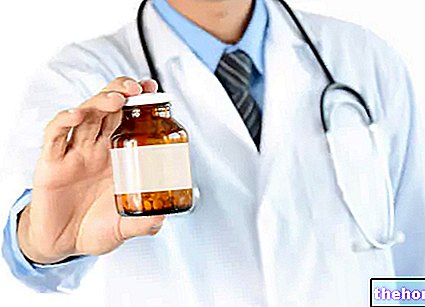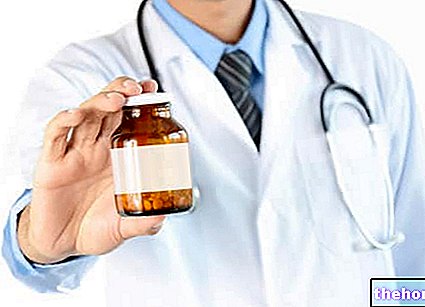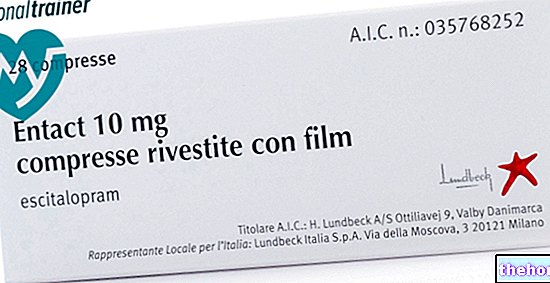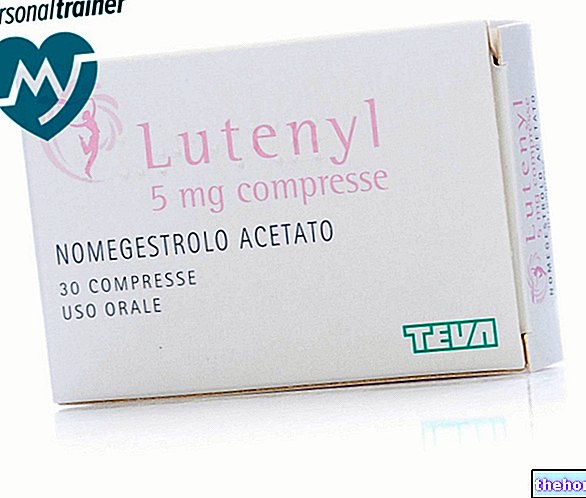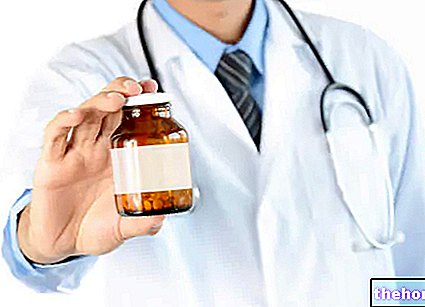Active ingredients: Phenobarbital
GARDENALE 50 mg tablets
GARDENALE 100 mg tablets
Why is Gardenale used? What is it for?
PHARMACOTHERAPEUTIC CATEGORY
Antiepileptic barbiturate
THERAPEUTIC INDICATIONS
Gardenale is mainly indicated as a general sedative, with particular regard to epilepsy and all conditions that require long-lasting sedation. Gardenale is particularly useful in tonic-clonic seizures of grand mal and focal cortical seizures. It can be used as a hypnotic and in the detoxification of chronic barbiturism.
Contraindications When Gardenale is not to be used
Hypersensitivity to the active substance, to other barbiturates, to any of the excipients, porphyria, renal and hepatic insufficiency, severe heart disease, acute intoxication from alcohol, analgesics, hypnotics.
Precautions for use What you need to know before taking Gardenale
Phenobarbital can be addictive. Continued therapy induces the production of liver enzymes that accelerate the metabolism of some drugs, such as anticoagulants, some antibiotics, adrenal steroids, etc.
The effect of alcohol is enhanced and the intake of alcoholic beverages should be limited.
The association with other psychotropic drugs and antihistamines requires particular caution and vigilance on the part of the physician to avoid unexpected undesirable effects from interaction.
Hypericum perforatum preparations should not be taken concomitantly with phenobarbital containing medicinal products due to the risk of decreased plasma levels and decreased therapeutic efficacy of phenobarbital (see Interactions).
Abrupt discontinuation of treatment in epileptic patients can induce a status epilepticus.
Reduce the dosage in case of renal insufficiency, hepatic insufficiency (for the risk of hepatic encephalopathy, establish a biological control), in the elderly subject and in case of alcoholism.
In the child on long-term treatment with phenobarbital, the association with prophylactic treatment of rickets should be considered.
The following life-threatening skin reactions have been reported with the use of Gardenale: Stevens-Johnson syndrome (SJS) and toxic epidermal necrolysis (TEN).
Patients should be informed of the signs and symptoms and monitored closely for skin reactions. The highest risk of developing SJS and TEN occurs in the first few weeks of treatment.
If symptoms or signs of SJS or TEN occur (e.g. progressive skin rash often with blistering or mucosal lesions), Gardenale should be discontinued.
The best results in the management of SJS and TEN are obtained with an early diagnosis and immediate discontinuation of therapy with any suspect drug. Early discontinuation is associated with a better prognosis.
If the patient has developed SJS or TEN with the use of Gardenale, Gardenale should no longer be used in this patient.
Interactions Which drugs or foods can modify the effect of Gardenale
Associations not recommended
Estrogen-progestins and progestogens (used as contraceptives): decrease in contraceptive efficacy due to increased hepatic catabolism. Preferably use a different contraceptive method, in particular a mechanical one.
Alcohol: potentiates the sedative effect of phenobarbital. Avoid drinking alcoholic beverages or medicines containing alcohol during treatment.
Hypericum perforatum: The efficacy of phenobarbital may be reduced by the simultaneous administration of Hypericum perforatum-based preparations. This is due to the induction of the enzymes responsible for drug metabolism by Hypericum perforatum-based preparations which, therefore, should not be administered in concomitance with phenobarbital. The induction effect may persist for at least two weeks after stopping treatment with Hypericum perforatum products.
If a patient is taking Hypericum perforatum products at the same time, blood phenobarbital levels should be monitored and therapy with Hypericum perforatum products discontinued. Blood phenobarbital levels may increase with stopping Hypericum perforatum. The phenobarbital dosage may need to be adjusted.
Associations requiring special precautions
Cyclosporine: possible reduction of circulating rates with decrease of activity during the association (acceleration of catabolism). Conversely, there is an increase in plasma levels after discontinuation of the inducer. Increase the doses of cyclosporine while keeping plasma levels under control. Reduce the dosage after discontinuation of the inducer.
Corticoids (gluco-, mineralo-, generally): decrease in the efficacy of corticoids (increase in their catabolism). The consequences are particularly important in the case of Addisonians and transplants.
Clinical and biological control: adaptation of the corticoid dosage during the association and after the suspension of the inducer.
Doxycycline: decrease in the plasma concentration of doxycycline probably secondary to the decrease in the plasma half-life of doxycycline and consequent increase in its hepatic metabolism.
Clinical control and possible adaptation of the therapeutic scheme (increase the daily dosage or divide the dose into two administrations per day).
Hydroquinidine, quinidine: decrease in plasma levels of quinidine and in antiarrhythmic efficacy (increase in its hepatic metabolism).
Clinical control, ECG and possibly of kinidinemia; if necessary, adjust the dosage of quinidine during treatment with the inducer and after its discontinuation (risk of quinidine overdose).
Levothyroxine: effects described for phenytoin, rifampicin, carbamazepine. Risk of clinical hypothyroid in hypothyroid patients due to increased catabolism of T3 and T4. Check the serum levels of T3 and T4 and adjust the dosage of levothyroxine as necessary during treatment with the inducer and after its suspension.
Theophylline (and by extrapolation, derivatives of theophylline): decrease in plasma rates and the activity of theophylline (increase in its metabolism by enzymatic induction).
Clinical and, if necessary, theophylline monitoring. Adapt, if necessary, the theophylline dosage during treatment with the inducer and after its suspension.
Folic acid: in case of folic acid administration, reduction of plasma phenobarbital levels which can lead to a decrease in activity (return to normal of a metabolism previously decreased due to folic deficiency). Clinical control, possibly of plasma levels and adaptation, if necessary, of the dosage of phenobarbital during the administration of folic acid and after its suspension.
Valproic acid: increase in plasma concentrations of phenobarbital with the onset of sedation (inhibition of hepatic catabolism), more frequent in children. Clinical control in the first 15 days of combination therapy and reduction of phenobarbital doses upon the appearance of signs of sedation; check the plasma levels of phenobarbital if necessary.
Oral anticoagulants: decrease in the effect of oral anticoagulants (increase in their hepatic catabolism).
More frequent monitoring of prothrombin levels and adjustment of oral anticoagulant dosage during treatment with phenobarbital and for 8 days after discontinuation.
Imipramine antidepressants: Imipraminic antidepressants favor the onset of generalized seizures.
Clinical control and eventual increase of the dosage of antiepileptics.
Digitoxin: decrease in the effect of digitoxin (increase in its hepatic catabolism).
Clinical control, ECG, and possibly of digitoxinemia. If necessary, dosage adjustment of digitoxin during combination and after phenobarbital withdrawal; digoxin, less metabolised by the liver, is preferable - Progabide: possible increase in plasma phenobarbital levels. Likely decrease in plasma progabide levels (not verified) Clinical control and possibly of plasma phenobarbital levels.
Associations to be implemented with caution
Carbamazepine: progressive decrease in plasma carbamazepine levels without this adversely affecting the antiepileptic activity. To be taken into account in particular when interpreting plasma levels.
Disopyramide: decrease in antiarrhythmic efficacy due to a decrease in plasma levels of disopyramide.
Other CNS depressant drugs: antidepressants (excluding A-selective MAOIs), most anti-H1 antihistamines, clonidine and clonidine-like benzodiazepines, hypnotics, morphine derivatives (analgesics and antitussives), neuroleptics, tranquilizers other than benzodiazepines. Increase in central depression which can have serious consequences, especially when driving or using machines.
Phenytoin: in case of association with phenobarbital, unpredictable variations may occur: the plasma levels of phenytoin are more often decreased (increased metabolism) without this having adverse effects on the anticonvulsant activity. When phenobarbital is suspended, toxic effects of phenytoin may appear. Sometimes the plasma levels of phenytoin increase (inhibition of metabolism by competition). To be taken into consideration when interpreting plasma levels.
Alprenolol, metoprolol, propranolol (beta blockers): decrease in plasma levels of these beta-blockers with reduction of their clinical effects (increase in their hepatic metabolism). To be taken into account for those beta-blockers eliminated mainly by hepatic biotransformation.
Warnings It is important to know that:
A small number of patients being treated with antiepileptic drugs such as Gardenale have developed thoughts of self-harm or suicide. Anytime such thoughts arise, contact your doctor immediately.
Effects on ability to drive and use machines
The treatment with phenobarbital reduces attention and lengthens the time of reflexes: patients must be warned of this so that they avoid driving vehicles or carrying out activities that require vigilance integrity due to their dangerousness.
Pregnancy and breastfeeding
Patients who may become pregnant or are of childbearing age should be given specialist advice. The need for antiepileptic treatment should be re-evaluated when the patient plans to become pregnant.
The risk of congenital defects is increased by a factor of 2 to 3 times in the offspring of mothers treated with an antiepileptic, the most frequently reported being cleft lip, cardiovascular malformations and neural tube defects.
Polytherapy with antiepileptic drugs may be associated with a higher risk of congenital malformations than monotherapy. Therefore it is important that monotherapy is practiced whenever possible.
Abrupt discontinuation of antiepileptic therapy should not be practiced due to the danger of a resumption of seizures which could have serious consequences for both mother and baby.
The use of phenobarbital while breastfeeding is not recommended.
Dosage and method of use How to use Gardenale: Dosage
As a sedative from 50 to 100 mg per day. As an anticonvulsant, in adults from 100 to 300 mg per day in 2-3 administrations.
In children from 20 to 100 mg according to age and weight.
In the "severe insomnia 50 to 200 mg in the evening one" hour before bedtime.
The tablets can be dissolved in a little water or possibly added to food.
In the treatment of elderly patients, the posology must be carefully established by the physician who will have to evaluate a possible reduction of the dosages indicated above.
Overdose What to do if you have taken too much Gardenale
Treatment of acute barbiturate intoxication involves immediate gastric lavage, if the patient's condition permits. Removal of the already absorbed drug can be achieved with forced diuresis and alkalinization of the urine. In severe cases, hemodialysis is useful and breathing may need to be mechanically controlled. Antibiotic administration is necessary to avoid the onset of pulmonary complications.
Side Effects What are the side effects of Gardenale
Sedation, ataxia, nystagmus and mental confusion may arise, especially in the elderly, following the administration of high doses. Rare skin allergic manifestations.
Hypoprothrombinemia sensitive to vitamin K therapy may occur in newborns of mothers treated with phenobarbital.
During chronic treatments, folate-sensitive megaloblastic anemia and osteomalacia that responds to vitamin D treatment may arise.
Cases of Dupuytren's contracture have been reported very rarely.
- Cutaneous: Serious skin adverse reactions (SCARs) such as Stevens-Johnson syndrome (SJS) and toxic epidermal necrolysis (TEN) have been reported (see Precaution for use). Frequency: very rare. Rare cases of erythema have been reported. multifaceted.
- Hepato-biliaryi: rare cases of toxic hepatitis.
- Hematological: rare cases of leukopenia, agranulocytosis, thrombocytopenia and purpura.
- Central nervous system: in some subjects the following may occur rarely: excitement, agitation and delirium. Manifestations of hyperactivity may occur in pediatric patients.
Musculoskeletal and connective tissue disorders
There have been reports of decreased bone mineral density, osteopenia, osteoporosis and fractures in patients on long-term therapy with Gardenale. The mechanism by which Gardenale affects bone metabolism has not been identified.
Compliance with the instructions contained in the package leaflet reduces the risk of undesirable effects. It is important to inform the doctor or pharmacist of any undesirable effect, even if not described in the package leaflet.
Expiry and Retention
Store at a temperature not exceeding 30 ° C
Expiry: see the expiry date printed on the package.
The expiry date indicated refers to the product in intact and correctly stored packaging.
WARNING: do not use the medicine after the expiry date indicated on the package.
Keep this medicine out of the reach of children
COMPOSITION
GARDENALE 50 mg tablets
One tablet contains:
Active principle: phenobarbital 50 mg
Excipients: corn starch, magnesium stearate, pregelatinised corn starch
GARDENALE 100 mg tablets
One tablet contains:
Active principle: phenobarbital 100 mg
Excipients: corn starch, magnesium stearate, pregelatinised corn starch.
PHARMACEUTICAL FORM AND CONTENT
Tablets for oral use.
- Box of 30 tablets of 50 mg in blister
- Box of 20 tablets of 100 mg in blister packs
Source Package Leaflet: AIFA (Italian Medicines Agency). Content published in January 2016. The information present may not be up-to-date.
To have access to the most up-to-date version, it is advisable to access the AIFA (Italian Medicines Agency) website. Disclaimer and useful information.
01.0 NAME OF THE MEDICINAL PRODUCT
GARDENALE
02.0 QUALITATIVE AND QUANTITATIVE COMPOSITION
GARDENALE 50 mg tablets
One tablet contains:
Active principle: phenobarbital 50 mg.
GARDENALE 100 mg tablets
One tablet contains:
Active principle: phenobarbital 100 mg.
For excipients, see 6.1
03.0 PHARMACEUTICAL FORM
Tablets.
04.0 CLINICAL INFORMATION
04.1 Therapeutic indications
Gardenale is mainly indicated as a general sedative, with particular regard to epilepsy and all conditions that require long-lasting sedation. Gardenale is particularly useful in tonic-clonic seizures of grand mal and focal cortical seizures. It can be used in detoxification from the chronic barbiturism.
04.2 Posology and method of administration
As a sedative from 50 to 100 mg per day. As an anticonvulsant, in adults from 100 to 300 mg per day in 2-3 administrations.
In children from 20 to 100 mg according to age and weight.
The tablets can be dissolved in a little water or possibly added to food. In the treatment of elderly patients, the posology must be carefully established by the physician who will have to evaluate a possible reduction of the dosages indicated above.
04.3 Contraindications
Hypersensitivity to the active substance, to other barbiturates or to any of the excipients, porphyria, renal and hepatic insufficiency, severe heart disease, acute intoxication from alcohol, analgesics, hypnotics.
04.4 Special warnings and appropriate precautions for use
Cases of suicidal ideation and behavior have been reported in patients receiving antiepileptic drugs in their various indications. A meta-analysis of randomized clinical trials versus placebo also highlighted the presence of a modest increase in the risk of suicidal ideation and behavior.
The mechanism of this risk has not been established and the available data do not exclude the possibility of an increased risk with Gardenale.
Therefore, patients should be monitored for signs of suicidal ideation and behavior and appropriate treatment should be considered if so. Patients (and caregivers) should be instructed to notify their treating physician if signs of suicidal ideation or behavior emerge.
The following life-threatening skin reactions have been reported with the use of Gardenale: Stevens-Johnson syndrome (SJS) and toxic epidermal necrolysis (TEN).
Patients should be informed of the signs and symptoms and monitored closely for skin reactions. The highest risk of developing SJS and TEN occurs in the first few weeks of treatment.
If symptoms or signs of SJS or TEN occur (e.g. progressive skin rash often with blistering or mucosal lesions), Gardenale should be discontinued.
The best results in the management of SJS and TEN are obtained with an early diagnosis and immediate discontinuation of therapy with any suspect drug. Early discontinuation is associated with a better prognosis.
If the patient has developed SJS or TEN with the use of Gardenale, Gardenale should no longer be used in this patient.
Reduce the dosage in case of renal insufficiency, hepatic insufficiency (for the risk of hepatic encephalopathy, establish a biological control), in the elderly subject and in case of alcoholism.
Due to the reciprocal enhancement, alcoholic beverages are not recommended during treatment.
In the child on long-term treatment with phenobarbital, the association with prophylactic treatment of rickets: vitamin D2 or 25 OH-vitamin D3 should be considered.
Also carefully read paragraphs 4.5, 4.6 and 4.7.
Phenobarbital can be addictive. Continued therapy induces the production of liver enzymes that accelerate the metabolism of some drugs, such as anticoagulants, some antibiotics, adrenal steroids, etc.
The association with other psychotropic drugs and antihistamines requires particular caution and vigilance on the part of the physician to avoid unexpected undesirable effects from interaction.
Hypericum perforatum preparations should not be taken concomitantly with phenobarbital containing medicinal products due to the risk of decreased plasma levels and decreased therapeutic efficacy of phenobarbital (see 4.5).
Abrupt discontinuation of treatment in epileptic patients can induce a status epilepticus.
04.5 Interactions with other medicinal products and other forms of interaction
Associations not recommended
- Estrogen and progestogen (used as contraceptives): decrease in contraceptive efficacy due to increased hepatic catabolism.
Preferably use a different method of contraception, particularly a mechanical one.
- Alcohol: potentiates the sedative effect of phenobarbital. Avoid drinking alcoholic beverages or medicines containing alcohol during treatment.
- Hypericum perforatum: The efficacy of phenobarbital may be reduced by the simultaneous administration of Hypericum perforatum-based preparations. This is due to the induction of the enzymes responsible for drug metabolism by Hypericum perforatum-based preparations which, therefore, should not be administered concomitantly with phenobarbital. The induction effect may persist for at least two weeks after stopping treatment with Hypericum perforatum products.
If a patient is taking Hypericum perforatum products at the same time, blood phenobarbital levels should be monitored and therapy with Hypericum perforatum products discontinued.
Blood phenobarbital levels may increase with stopping Hypericum perforatum. The phenobarbital dosage may need to be adjusted.
Associations requiring special precautions
- Cyclosporine: possible reduction of circulating rates with decrease of activity during the association (acceleration of catabolism). Conversely, there is an increase in plasma levels after discontinuation of the inducer. Increase the doses of cyclosporine while keeping plasma levels under control. Reduce the dosage after discontinuation of the inducer.
- Corticoids (gluco-, mineralo-, generally): decrease in the effectiveness of corticoids (increase in their catabolism). The consequences are particularly important in the case of Addisonians and transplants.
Clinical and biological control: adaptation of the corticoid dosage during the association and after the suspension of the inducer.
- Doxycycline: decrease in the plasma concentration of doxycycline probably secondary to the decrease in the plasma half-life of doxycycline and consequent increase in its hepatic metabolism.
Clinical control and possible adaptation of the therapeutic scheme (increase the daily dosage or divide the dose into two administrations per day).
- Hydroquinidine, quinidine: decrease in plasma levels of quinidine and in antiarrhythmic efficacy (increase in its hepatic metabolism).
Clinical control, ECG and possibly of kinidinemia; if necessary, adjust the dosage of quinidine during treatment with the inducer and after its discontinuation (risk of quinidine overdose).
- Levothyroxine: effects described for phenytoin, rifampicin, carbamazepine. Risk of clinical hypothyroid in hypothyroid patients due to increased catabolism of T3 and T4. Check the serum levels of T3 and T4 and adjust the dosage of levothyroxine as necessary during treatment with the inducer and after its suspension.
- Theophylline (and by extrapolation, derivatives of theophylline): decrease in plasma rates and theophylline activity (increase in its metabolism by enzymatic induction).
Clinical and, if necessary, theophylline monitoring. Adapt, if necessary, the theophylline dosage during treatment with the inducer and after its suspension.
- Folic acid: in case of folic acid administration, reduction of plasma phenobarbital levels which can lead to a decrease in activity (return to normal of a metabolism previously decreased due to folic deficiency).
Clinical control, possibly of plasma levels and adaptation, if necessary, of the dosage of phenobarbital during the administration of folic acid and after its suspension.
- Valproic acid: increase in plasma concentrations of phenobarbital with the onset of sedation (inhibition of hepatic catabolism), more frequent in children.
Clinical control in the first 15 days of combination therapy and reduction of phenobarbital doses upon the appearance of signs of sedation; check the plasma levels of phenobarbital if necessary.
- Oral anticoagulants: decrease in the effect of oral anticoagulants (increase in their hepatic catabolism).
More frequent monitoring of prothrombin levels and adjustment of oral anticoagulant dosage during treatment with phenobarbital and for 8 days after discontinuation.
- Imipramine antidepressants: Imipraminic antidepressants favor the onset of generalized seizures.
Clinical control and eventual increase of the dosage of antiepileptics.
- Digitoxin: decrease in the effect of digitoxin (increase in its hepatic catabolism).
Clinical control, ECG, and possibly of digitoxinemia. If necessary, dosage adjustment of digitoxin during combination and after phenobarbital withdrawal; digoxin, less metabolised by the liver, is preferable.
- Progabide: possible increase in plasma phenobarbital levels. Likely decrease in plasma progabide levels (not verified).
Clinical and possibly control of plasma phenobarbital levels. Possible adaptation of the posologies.
Associations to be implemented with caution
- Carbamazepine: progressive decrease in plasma carbamazepine levels without this adversely affecting the antiepileptic activity. To be taken into account in particular when interpreting plasma levels.
- Disopyramide: decrease in antiarrhythmic efficacy due to a decrease in plasma levels of disopyramide.
- Other CNS depressant drugs: antidepressants (excluding A-selective MAOIs), most anti-H1 antihistamines, benzodiazepines, clonidine and clonidine-like, hypnotics, morphine derivatives (analgesics and antitussives), neuroleptics, tranquilizers other than benzodiazepines.
Increase in central depression which can have serious consequences, especially when driving or using machines.
- Phenytoin: in case of association with phenobarbital, unpredictable variations may occur: the plasma levels of phenytoin are more often decreased (increased metabolism) without this having adverse effects on the anticonvulsant activity. When phenobarbital is suspended, toxic effects of phenytoin may appear. sometimes the plasma levels of phenytoin increase (inhibition of metabolism by competition).
To be taken into consideration when interpreting plasma levels.
- Alprenolol, metoprolol, propranolol (beta blockers): decrease in plasma levels of these beta-blockers with reduction of their clinical effects (increase in their hepatic metabolism). To be taken into account for those beta-blockers eliminated mainly by hepatic biotransformation.
04.6 Pregnancy and lactation
Patients who may become pregnant or are of childbearing age should be given specialist advice.
The need for antiepileptic treatment should be re-evaluated when the patient plans to become pregnant.
The risk of congenital defects is increased by a factor of 2 to 3 times in the offspring of mothers treated with an antiepileptic, the most frequently reported being cleft lip, cardiovascular malformations and neural tube defects.
Polytherapy with antiepileptic drugs may be associated with a higher risk of congenital malformations than monotherapy. Therefore it is important that monotherapy is practiced whenever possible.
Abrupt discontinuation of antiepileptic therapy should not be practiced due to the danger of a resumption of seizures which could have serious consequences for both mother and baby.
In newborns of mothers treated with phenobarbital, a haemorrhagic syndrome may arise which can be prevented by treatment of the mother with vitamin K the month before delivery. The use of phenobarbital during breastfeeding is not recommended because phenobarbital crosses the placental barrier and is found excreted in breast milk.
04.7 Effects on ability to drive and use machines
The treatment with phenobarbital reduces attention and lengthens the time of reflexes: patients must be warned of this so that they avoid driving vehicles or carrying out activities that require vigilance integrity due to their dangerousness.
04.8 Undesirable effects
Sedation, ataxia, nystagmus and mental confusion may arise, especially in the elderly, following the administration of high doses. Rare skin allergic manifestations.
Hypoprothrombinemia sensitive to vitamin K therapy may occur in newborns of mothers treated with phenobarbital. During chronic treatments, folate-sensitive megaloblastic anemia and osteomalacia that responds to vitamin D treatment may arise.
Cases of Dupuytren's contracture have been reported very rarely.
- Cutaneous: Serious skin adverse reactions (SCARs) such as Stevens-Johnson syndrome (SJS) and toxic epidermal necrolysis (TEN) have been reported (see section 4.4). Frequency: very rare. Rare cases of erythema multiforme have been reported.
- Hepato-biliary: rare cases of toxic hepatitis.
- Hematological: rare cases of leukopenia, agranulocytosis, thrombocytopenia and purpura.
- Central nervous system: in some subjects the following may occur rarely: excitement, agitation and delirium. Manifestations of hyperactivity may occur in pediatric patients.
Musculoskeletal and connective tissue disorders
There have been reports of decreased bone mineral density, osteopenia, osteoporosis and fractures in patients on long-term therapy with Gardenale. The mechanism by which Gardenale affects bone metabolism has not been identified.
Reporting of suspected adverse reactions.
Reporting of suspected adverse reactions occurring after authorization of the medicinal product is important as it allows continuous monitoring of the benefit / risk balance of the medicinal product. Healthcare professionals are asked to report any suspected adverse reactions via the national reporting system. "address https://www.aifa.gov.it/content/segnalazioni-reazioni-avverse.
04.9 Overdose
In the first hour following an overdose, the following appear: nausea, vomiting, headache, drowsiness, mental confusion, comatose state accompanied by a characteristic autonomic syndrome (irregular bradypnea, tracheobronchial obstruction, arterial hypotension). Treatment of acute barbiturate intoxication involves immediate gastric lavage, if the patient's condition permits. Removal of the already absorbed drug can be achieved with forced diuresis and alkalinization of the urine. In severe cases, hemodialysis is useful and breathing may need to be mechanically controlled. Antibiotic administration is necessary to avoid the onset of pulmonary complications.
05.0 PHARMACOLOGICAL PROPERTIES
05.1 Pharmacodynamic properties
Pharmacotherapeutic group: antiepileptics, barbiturates.
ATC code: N03AA02.
Phenobarbital is a barbiturate, anticonvulsant, hypnotic-sedative drug. Its activity is expressed both at the cortical and subcortical levels.
05.2 Pharmacokinetic properties
Approximately 80% of orally administered phenobarbital is absorbed from the gastrointestinal tract; plasma peak is reached after approximately 8 hours in the adult and after approximately 4 hours in the child. The plasma half-life is 50-140 hours in the adult and 40-70 hours in the child; it increased in the elderly and in cases of hepatic or renal insufficiency.
Phenobarbital spreads throughout the body, especially in the brain thanks to its fat solubility; it crosses the placental barrier and is excreted in breast milk.
Plasma protein binding is approximately 50%. It is metabolised in the liver to an inactive hydroxylated derivative, which is then glucuroconjugated or sulphonated, and is excreted via the kidney in an unmodified form (to a greater extent the more alkaline the urine is).
05.3 Preclinical safety data
06.0 PHARMACEUTICAL INFORMATION
06.1 Excipients
Maize starch, magnesium stearate, pregelatinised maize starch.
06.2 Incompatibility
None known.
06.3 Period of validity
36 months
06.4 Special precautions for storage
Store at a temperature not exceeding 30 ° C
06.5 Nature of the immediate packaging and contents of the package
- Box of 30 tablets of 50 mg in blister packs
- Box of 20 tablets of 100 mg in blister
06.6 Instructions for use and handling
No special instructions.
07.0 MARKETING AUTHORIZATION HOLDER
sanofi-aventis S.p.A. - Viale L. Bodio, 37 / B - Milan
08.0 MARKETING AUTHORIZATION NUMBER
Gardenale 50 mg tablets - 30 tablets AIC n. 004556027
Gardenale 100 mg tablets - 20 tablets AIC n. 004556015
09.0 DATE OF FIRST AUTHORIZATION OR RENEWAL OF THE AUTHORIZATION
First Authorization: 02.03.1951
Renewal of the Authorization: 01.06.2010
10.0 DATE OF REVISION OF THE TEXT
January 2014


